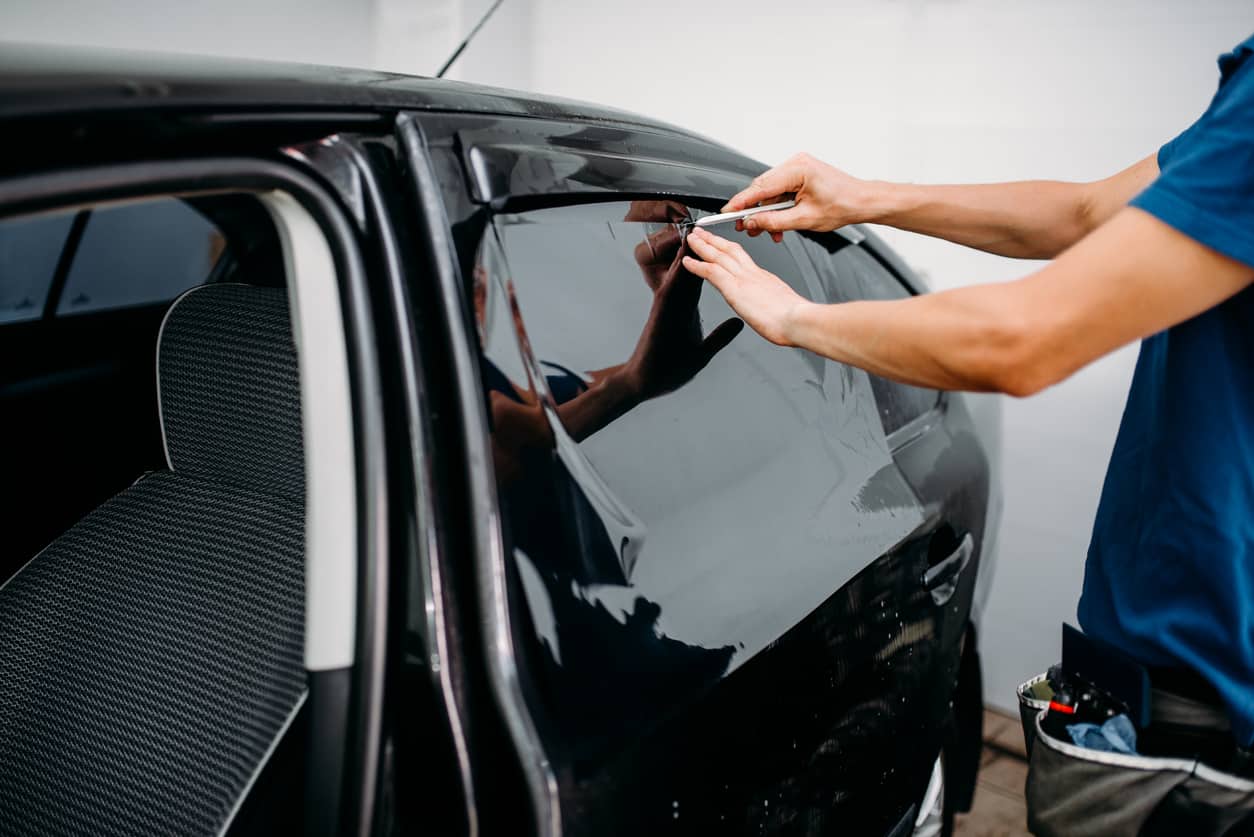Introduction: Car window tinting has become a popular automotive enhancement for both aesthetic and practical reasons. From enhancing privacy to protecting against harmful UV rays, tinted windows offer a range of benefits. In this comprehensive guide, we’ll delve into the world of car window tinting, exploring its advantages, different types, installation process, and regulations.
Benefits of Car Window Tinting:
- UV Protection: Tinted windows help block harmful UV rays, protecting both passengers and the vehicle’s interior from sun damage.

- Heat Reduction: Tinted films can significantly reduce heat buildup inside the car, creating a more comfortable driving experience, especially during hot summer months.
- Glare Reduction: Tinted windows reduce glare from sunlight, headlights, and other reflective surfaces, improving visibility and safety while driving.
- Privacy: Tinted windows enhance privacy by making it difficult for outsiders to see inside the vehicle, adding a layer of security for occupants and belongings.
- Interior Protection: By blocking UV rays and reducing heat, window tinting helps preserve the interior of the car, preventing fading, cracking, and deterioration of upholstery, dashboard, and other surfaces.
Types of Window Tinting:
- Dyed Film: This type of tinting uses a layer of dyed polyester film to absorb solar heat and reduce glare. It is the most affordable option but may fade over time.
- Metalized Film: Metalized tinting incorporates tiny metallic particles to reflect heat and block UV rays. It offers excellent heat rejection and durability but can interfere with electronic signals like GPS and cell phone reception.
- Carbon Film: Carbon window tinting is known for its sleek appearance and superior heat rejection. It contains carbon particles that do not interfere with electronic signals, making it a popular choice for modern vehicles.
- Ceramic Film: Considered the premium option, ceramic tinting utilizes ceramic nanoparticles to block heat and UV rays without interfering with electronic devices. It provides excellent clarity and durability but comes at a higher cost.
Installation Process: Professional installation is recommended for car window tinting to window tinting North West ensure proper application and adherence to local regulations. The process typically involves the following steps:
- Preparation: Cleaning the windows thoroughly to remove dirt, debris, and any existing tinting film.
- Cutting: Cutting the tinting film to the precise dimensions of each window using specialized tools.
- Application: Applying a solution to the window and carefully placing the tinting film, ensuring a smooth and bubble-free surface.
- Trimming: Trimming excess film and ensuring proper fit around window edges.
- Drying: Allowing the tinting film to dry completely, typically over a period of 1-2 days, before rolling down windows or cleaning.
Regulations and Legal Considerations: Car window tinting regulations vary by location, with laws governing factors such as tint darkness, reflectivity, and placement. It’s essential to familiarize yourself with local regulations before tinting your vehicle’s windows to avoid fines or penalties. Most jurisdictions specify allowable tint percentages for different windows, such as front side windows, rear side windows, and rear windows. Additionally, some areas prohibit certain types of tinting films, such as metallic or highly reflective varieties, due to concerns about visibility and interference with electronic devices.
Conclusion: Car window tinting offers a myriad of benefits, ranging from UV protection and heat reduction to improved privacy and aesthetics. By understanding the different types of tinting films, the installation process, and local regulations, drivers can make informed decisions to enhance both the functionality and appearance of their vehicles. Whether seeking relief from the sun’s glare or adding a touch of style, tinted windows provide a versatile solution for modern motorists.
